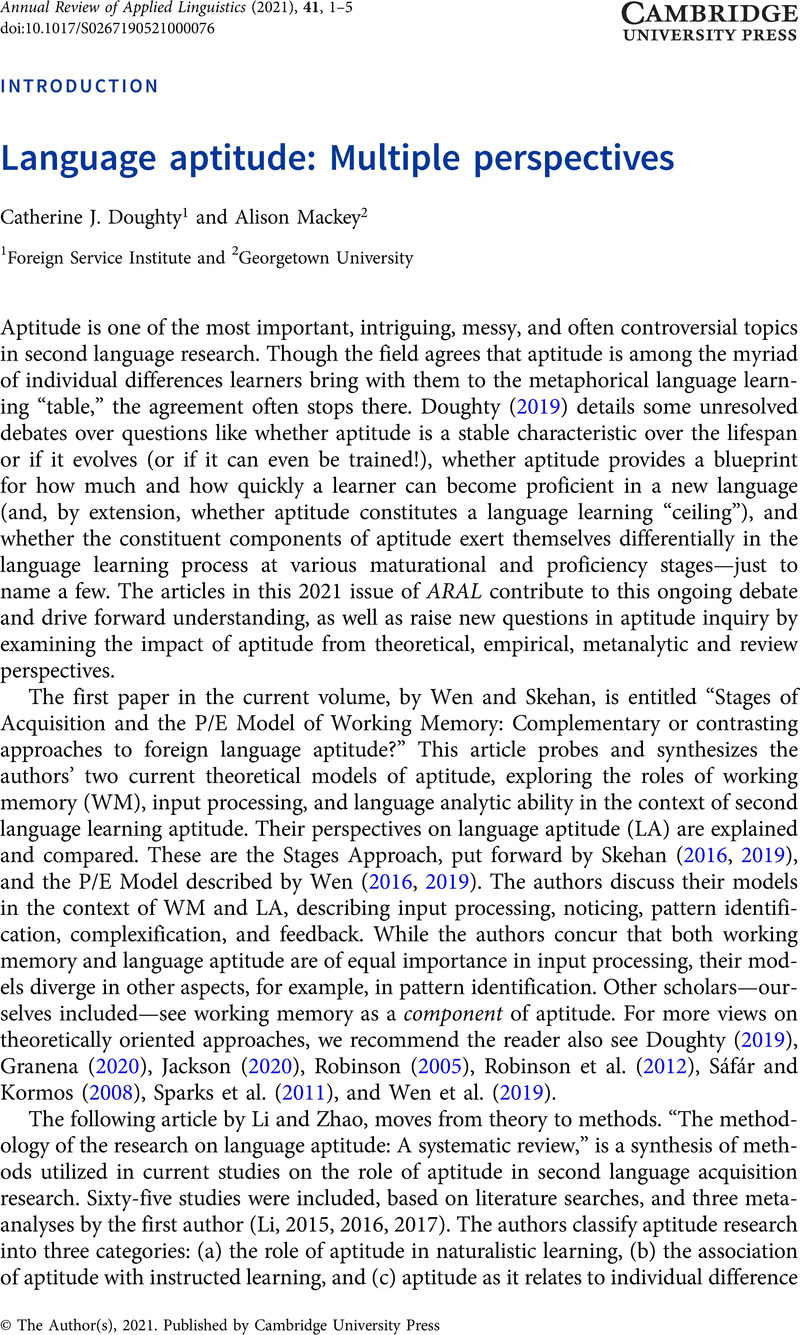Crossref Citations
This article has been cited by the following publications. This list is generated based on data provided by Crossref.
Chalmers, James
Eisenchlas, Susana A.
Munro, Andrew
and
Schalley, Andrea C.
2021.
Sixty years of second language aptitude research: A systematic quantitative literature review.
Language and Linguistics Compass,
Vol. 15,
Issue. 11,
Qiao, Chuandai
2024.
Factors influencing second language learning based on the research of Lightbown and Spada.
Frontiers in Psychology,
Vol. 15,
Issue. ,
Huang, Yan
Li, Dingyi
Ma, Jingzhi
Ji, Xinyun
and
Zhou, Chang
2024.
Bilinguals outperform trilinguals in implicit language aptitude: the mediating role of selective attention.
Journal of Multilingual and Multicultural Development,
p.
1.




